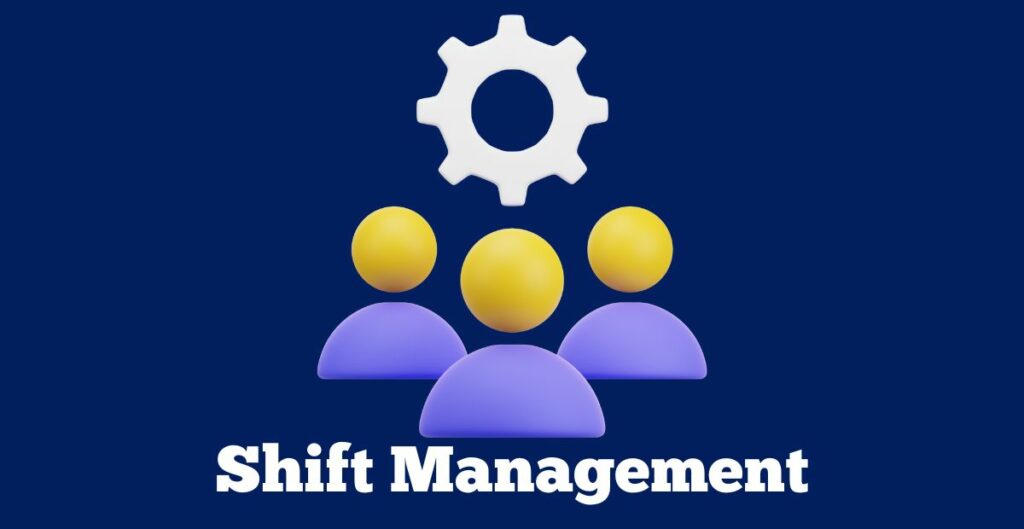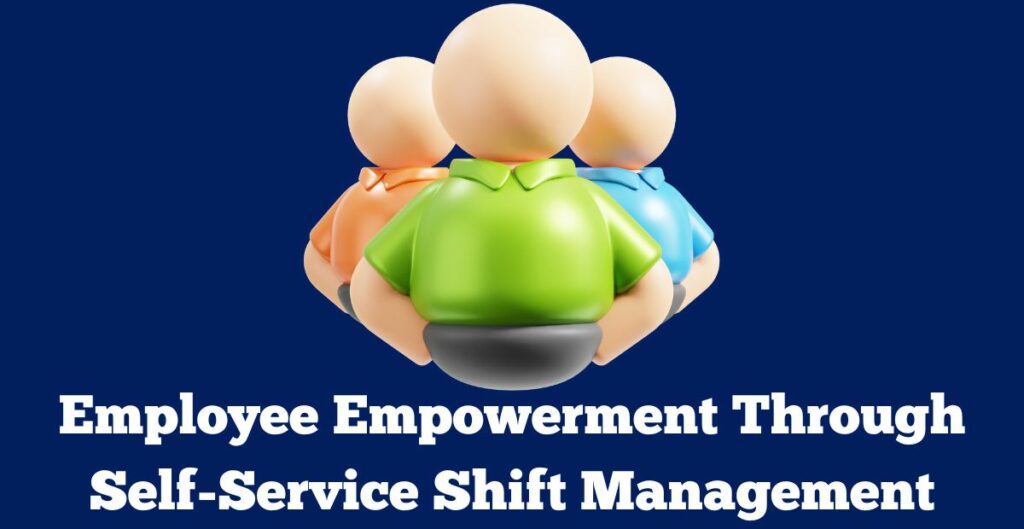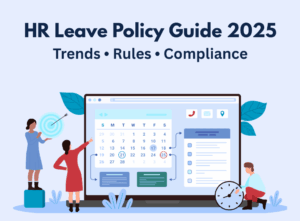Understanding Shift Management
The working paradigm of Shift management lies in the heart of planning and staffing schedules that allow the employer to maintain the company’s functionality and effectiveness. It is a mixture of assignments, with the key ones among them being the opening of shifts, worker attendance tracking, and shift management.
Exploring the Basics of Shift Management
In general, shift management encompasses employee assignment to different shifts based on mostly factors like availability, expertise, workload, and business needs. To implement that, reasonable planning and coordination to adjust staffing levels among various shifts and supply enough staffing during peak hours are inevitable.
Importance of Effective Shift Management Scheduling
Effective shift management scheduling is critical for several reasons:
- Optimizing Workforce Efficiency: Adequately organized schedules guarantee that there are staffers on hand with the needed skills, hence they can reduce the size of the corresponding downtime and production.
- Meeting Customer Demand: Shift management scheduling of employees promotes work organization concerning the demand for customer service, meeting with the deliverance of service when the customers are present.
- Managing Labor Costs: Tactical division of labour scheduling is a way to cut labour costs by limiting overtime expenses, controlling understaffing and overstaffing situations, and optimizing the use of resources.
- Enhanced Efficiency: Automated systems company, can facilitate the shift scheduling processes, which decreases the consumption of time and effort. Such efficiency helps managers to effectively allocate their professional time to strategic tasks and authorities instead of worrying about the day-to-day workload.
- Improved Accuracy: Automation plays a significant role in the reduction of the number of human errors in the redistribution of staff schedules, like; double scheduling, and or understaffing. These systems operate on specific rules and instructions that make tasks like personal availability, skills lists, and labor laws perform properly.
- Seamless Communication: Automated time management systems simplify the process of coordinating between managers and employees about modifications of shifts, requests for shifts to be switched, and changes in the timetables. This achievement contributes to transparency, creating less confusion, and ultimately helps satisfy employees through the timely distribution of information.
- Flexibility and Adaptability: Through an automated shift management planning mechanism the business can also change schedules and understand the necessity of some staff when some of the staff are not present or new demands require them. Due to this, the schedule is very flexible which helps in even staffing the shift while making sure that there are no operational obstructions.
- Compliance Assurance: Automated technologies play a role in assuming responsibility. Compliance with life laws and regulations is realized by way of the systems instantly applying relevant regulations, laws, and guidelines. This framework encompasses the issues of optimum working hours, rest periods, overtime figures, and other obligatory aspects that exactly match the laws of specific jurisdictions.
Utilizing HRMS for Shift Planning
HRMS (Human Resource Management System) software provides robust tools for effective shift planning, offering numerous benefits for businesses:
- Efficient Resource Allocation: However, due to HRMS, managers are capable of making use of all available employees with certain considerations like their availability, and skill sets and also consider labor regulations when it comes to scheduling shifts.
- Streamlined Communication: HRMS creates a homogeneous channel to ensure that the scheduled work, shift timing, and leave of absence policies are communicated easily between managers and employees.
- Optimized Workforce Utilization: HRMS is an instrument that is used in optimizing workforce utilization and this is made possible by interrelating schedules of employees to each other and their related activities. It helps to avoid understaffing or overstaffing.
Leveraging HRMS Features for Shift Assignment
HRMS platforms offer a range of features to streamline the shift assignment process, including:
- Employee Database: The information deriving from the HRMS related to the availability, qualifications, certifications, and standard shifts is centralized and easily accessible to scheduling managers so that they may assign shifts that satisfy the stipulated requirements.
- Shift Templates: HRMS is an excellent tool for managers to keep shift management templates for different roles assigned to pertinent departments, locations, or areas to guarantee uniformity in scheduling methods, time allocation, and ease of implementation.
- Automated Notifications: By putting X RAY-HRMS to use, employees get notifications on shifts, changes, and cancellations through a centrally managed system. As a result, there is an elimination or timely communication and misunderstandings are not the case.
Customizing Shift Patterns and Rotations
HRMS empowers businesses to customize shift patterns and rotations according to their specific needs and preferences:
- Flexible Scheduling Options: To cut workers’ shifts to criteria like fixed shifts, rotating shifts, split shifts, or on-call shifts you can utilize HRMS functionality, depending on the business’s operational objectives and employees’ needs.
- Rotation Management: HRMS supports businesses in their scheduling activities, where employees’ regimentation can be arranged in a fair shift distribution thus reducing the risk of repetitive fatigue stages among workers.
- Forecasting and Planning: HRMS has a function of forecasting and planning that enables businesses to identify the number of staff that are required at a particular point in time and arrange shift management patterns accordingly to fit the business needs depending on the fluctuations of demands.
Employee Empowerment Through Self-Service Shift Management
Self-service shift management empowers employees to take control of their work schedules, offering numerous benefits for both employees and employers:
- Greater Autonomy: The new self-service shift management technique allows employees to look for available shifts, work shift swap with their coworkers, and request their free time through a portal or an app that they may access through the internet or their mobile phones. This technique puts the control of their work time in their hands.
- Improved Communication: Self-service portals not only let employees manage their own shifts, but also provide an opportunity for direct communication between employees and managers that is related to shift preferences, availability, and scheduling conflicts, as well as other problems that could be solved by the computer without human intervention.
- Enhanced Flexibility: Employee-initiated shifts serve important purposes: individuals can switch times based on their commitments, for example, childcare, education, or work elsewhere.
Enabling Employees to Manage Their Shift Preferences
Self-service shift management platforms offer a range of features to enable employees to manage their shift preferences effectively:
- Shift Visibility: Employees will be able to browse through the available and open shifts in real time, which will allow them to choose times that are best suitable to them and the shifts that they prefer.
- Shift Swapping: Team members can easily swap shifts with each other within the self-organization function without supervision and coordination.
- Time-Off Requests: Staff members get to apply for vacations, appointed times, or any other reasons via a self-service system, therefore, eliminating the bottleneck approval process and making the communication between managers and team members fast.
Enhancing Employee Satisfaction and Work-Life Balance
Self-service shift management contributes to higher employee satisfaction and improved work-life balance in several ways:
- Empowerment and Control: By giving employees authority over their schedules, the self-service source helps them to have their work duties more manageable and personal obligations at the same time thus alleviating stress and improving job satisfaction.
- Flexibility and Adaptability: With self-service shift management scheduling, the employees will have the flexibility of work to accommodate changes in personal life or an emergency and so establish a more embracing and supportive workplace as they will be at ease when unplanned events occur
- Transparency and Fairness: Introducing such self-service systems leads to inclusiveness as well as creates a sense of transparency and fairness in shift allocation whereby employees can see the available shifts while also able to be part of the scheduling process which ensures the balanced allocation of shifts and reduces the perception of employees of favoritism or biases.
Real-Time Shift Tracking and Attendance Management
Real-time shift tracking and attendance management are essential components of effective workforce management, providing businesses with the tools to monitor employee attendance, track punctuality, and address shift management changes and absenteeism promptly :
Monitoring Employee Attendance and Punctuality
- Automated Systems: As employees HRMS or time tracking software are monitoring in real-time, they are helping businesses to record employees’ attendance both with the clock-in and clock-out times.
- Punctuality Tracking: These systems carry out an employee monitoring procedure, providing the manager with a high degree of flexibility to recognize and discipline inappropriate behaviour, mostly chronic absenteeism or lateness.
Addressing Shift Changes and Absenteeism Effectively
- Communication Channels: HRMS systems assist in the flow of communication about shift management in the workplace among managers and employees where shift change updates enable effective coordination with a minimal effect on workflow.
- Performance Tracking: Recording absenteeism and timekeeping helps organizations manage the performance of employees, reveal low-performing places, and take interventional measures on time.
Ensuring Compliance and Accountability
- Policy Enforcement: HRM systems are always working to ensure precise and fair attendance policy as one point of principle in the whole organization.
- Data Analysis: An inspection of attendance data allows managers to detect possible evolving absence patterns, as well as the factors leading to absenteeism. This will lead to the drawing of strategic decisions and remedies to increase attendance rates.
Integration with Payroll Software for Seamless Payroll Processing
Aligning Shift Data with Payroll Calculations
- Automated Data Transfer: Integration means that all shift data such as hours worked, overtime, and shift supplements, gets quickly transferred to payroll from the shift management system.
- Accuracy and Consistency: Manual data entry errors and potential risks such as under or overpayments, multiplication of tasks, and so forth, are completely done away with when the departments are perfectly integrated and payroll calculations are out of error, consistent, and free of compliance issues.
- Time Savings: Integration gives a boost to the work efficiency of payroll administrators by helping to eliminate manual transfer of information, therefore enabling them to deal with other payroll-related tasks and to advance in their jobs.
Automating Overtime and Shift Differential Payments
- Overtime Calculations: Automated systems calculate overtime pay and then apply these according to set system thresholds and rates. Together with the laws and regulations concerning fair compensation for work, the employee gets a due overtime pay distribution while they abide by all these rules.
- Shift Differential Payments: Integration facilitates the calculation of shift differentials which include the determination of the night shift premiums as well as the weekend rates into the staff paychecks automatically, hence reducing administrative irritation and achieving accurate payment.
Ensuring Compliance and Efficiency
- Compliance with Regulations: Through interconnected solutions, labor rules, and regulations specific to overtime, minimum wage, and all other tax-related due diligence, the danger of penalties and legal issues associated with non-compliance will be minimized.
- Efficiency and Accuracy: Automation of pay processes through integration being embedded in the process solutions helps to reduce the number of errors and delays in the execution of payroll processes, as well as to increase employee satisfaction levels due to timely and accurate salary payments.
Optimizing Shift Management with Data Analytics
1. Analyzing Shift Performance and Productivity
- Performance Metrics: Data analytics enables companies to track the relevant KPIs, for instance, a production during each shift, in addition to the productivity and customer satisfaction ratings, thus providing an objective assessment of performance.
- Productivity Analysis: By looking at metrics of productiveness, the companies can understand trends, patterns and performance in performing shifts, to help targeted interventions to be carried out to optimize productivity and efficiency.
- Comparative Analysis: Analytics tools allow businesses to compare shift performance across the same or different departments, organisations or branches. By this, it becomes possible to define the best practices and spot weaknesses in the rest.
2. Identifying Trends and Opportunities for Improvement
Trend Analysis: Analytics tools utilize the old time-shift data to discover the patterns and trends over time, including peak hours, seasonal sways or similar errors by comparing, to help the organization plan future needs and act at the appropriate time.
Root Cause Analysis: Through an inspection of shifts’ reports, organizations pinpoint the ones close to the source of low performance, absence of some employees, or inefficiencies allowing them to find specific interventions addressing the root problem and therefore improve the entire shift management.
Predictive Analytics: With the help of technical skills such as predictive modelling and forecasting, businesses acquire foresight, and they can proactively react to the challenges they are facing and the opportunities they will have to adapt.
3. Implementing Data-Driven Improvements
- Actionable Insights: Data analysis allows taking efficiency-enhancing decisions, based on the recommendations derived from the data analysis. The operators will thus be able to make informed decisions that will enable them to implement stationary or shifting changes.
- Continuous Monitoring: Through the regular screening of shift performance metrics and productivity indicators (like impacting, & fine-tuning), businesses can continually track the efficacy of interventions and modifications over time. This process becomes a cycle of refinements of the shift management strategies aiming at maximum effectiveness.
- Feedback Loop: The analysis of data makes possible a feedback loop that links data-driven decision-making, operational improvements and shift-day-to-day management, which allows the companies to forever work on improvement based on real-time findings and feedback.
Implementing Effective Shift Management Strategies
- Clear Communication: Encourage the development of very clear communication lines between managers and staff on shift schedules, expectations of behaviour, and every change that may come up. Clear talk is an instrument to create an environment of trust and decrease mistrust.
- Strategic Scheduling: Design shift schedules that are synchronized to meet business needs, consumer needs, and employee selection. Materialize rules such as peak hours, qualification necessities, and labour laws while making schedules in the process.
- Flexibility: Grant a flexible arrangement in scheduling shifts for the employees to fit their family and personal obligations and interests. Establish policies for changing shifts, taking time-off periods and maintaining a flexible working schedule which leads to work-life balance.
- Training and Support: Organize training for executives and employees on scheduling software usage, to ensure the managers know how to use the software well. Provide the necessary support to settle any problems or conquer any questions that may occur during the process.
- Performance Monitoring: Monitor variances in the shift performance and productivity metrics constantly and set out objectives which will improve performance. Use data analytics to keep in check key performance indicators (KPIs), which include, attendance, efficiency, and customer satisfaction.
- Employee Engagement: Camouflage an atmosphere of employee engagement by having employees partake in the gridding process. Ask for feedback, no worries and lead employees to offer advice or ideas for improving schedule-management practices.
- Recognition and Rewards: Conceiving and esteeming the staff members for the role they play in driving credible shift management is important. Acknowledge individuals as a group and exceptional performance, reliability, and teamwork thereby boosting morale and motivation.
- Compliance Adherence: Enforce the labour codes, regulations, and corporate rules applicable to shift scheduling, extra work time, breaks, etc. Secondly, be abreast with the current laws and schedule shifts adequately to meet the tune of the law.





